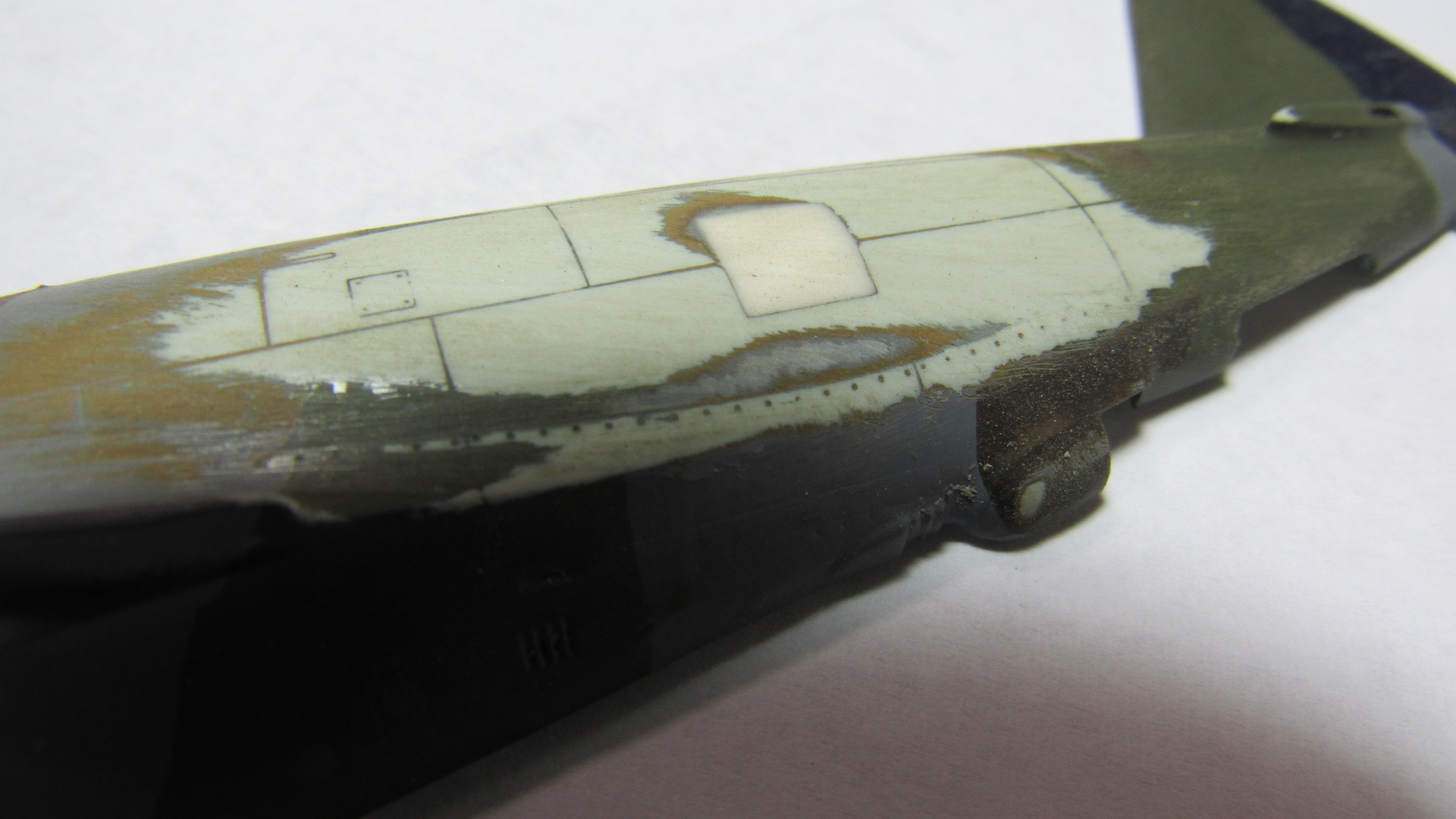
Golden Hard Molding Paste, Part 2
In science (real science) you have to do the experiment. All is bullshit until you do the experiment. All.
So I put some of Golden’s Hard Molding Paste on a model (test subject) and tried using it as I would any conventional filler. In other words, I did something I don’t like to do. I had to use sandpaper.
I hate sanding.
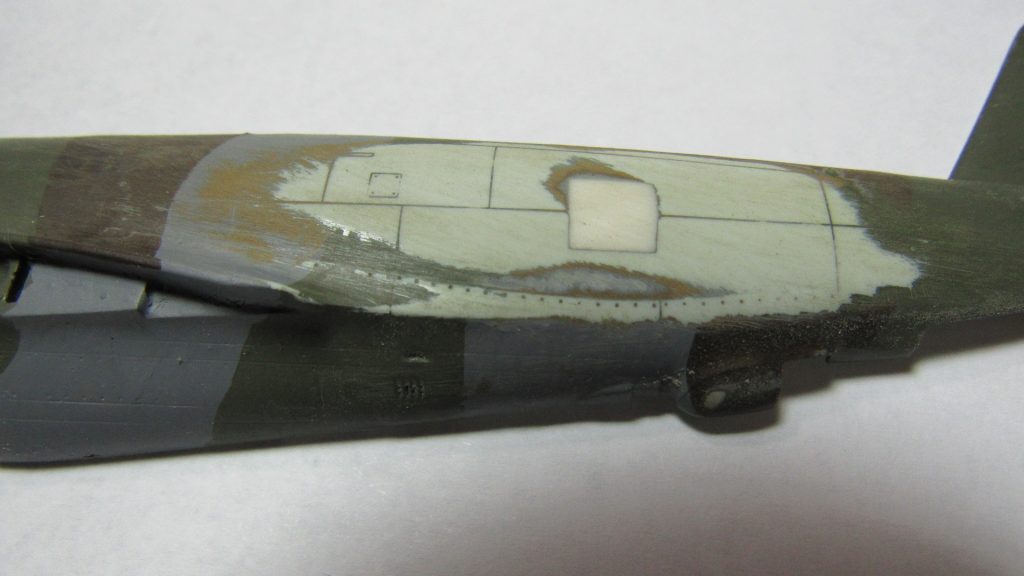
I smeared some of the molding paste on the turbo-supercharger intercooler opening on a fuselage half from a Revell 1/72 P-47M. I let it cure for a few days, then started sanding on it with some 200 grit wet-or-dry. I used it dry. I tried a little wet sanding and it seemed to be going off the rails so I aborted that effort. The above image shows the result of sanding down the molding paste in the most simple and obvious way.
Scritch scritch scritch with the old sandpaper. I didn’t use the Sonic Scrubber because I wanted to slow down the process so that I could observe it.
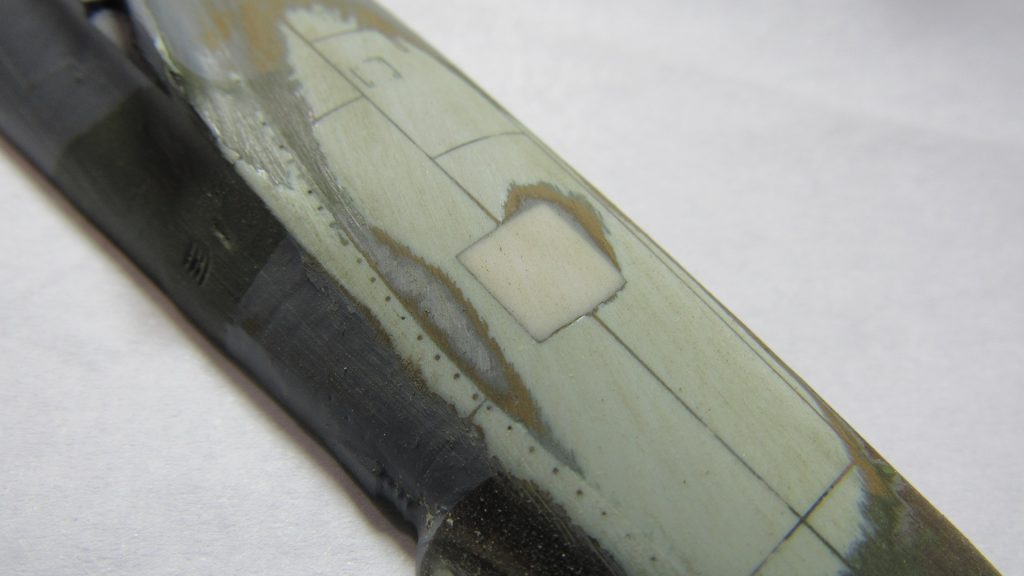
So I gave it a coat of paint to see if the filling did the job.
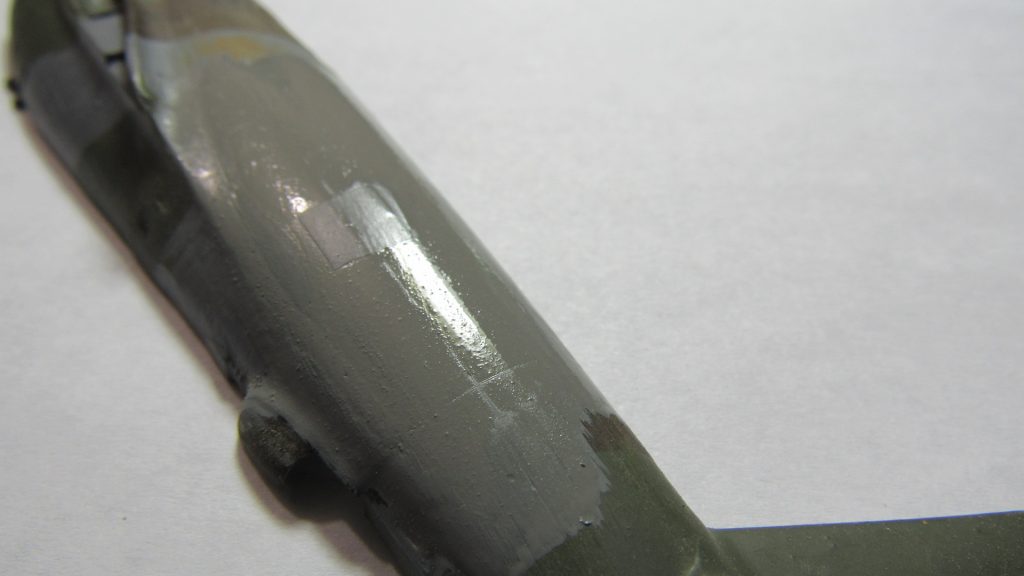
When the paint was wet, I could see that the filled portion reflected the light differently. Make a note of that, Samson.
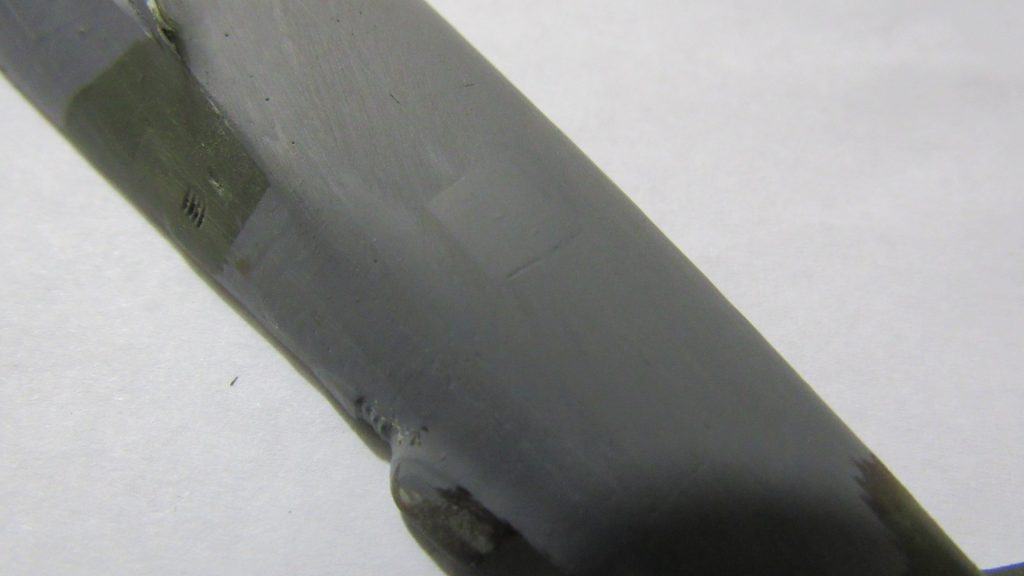
In this image we can still see the filled portion. Now let’s put a couple more coats of all-filling PAINT on there.
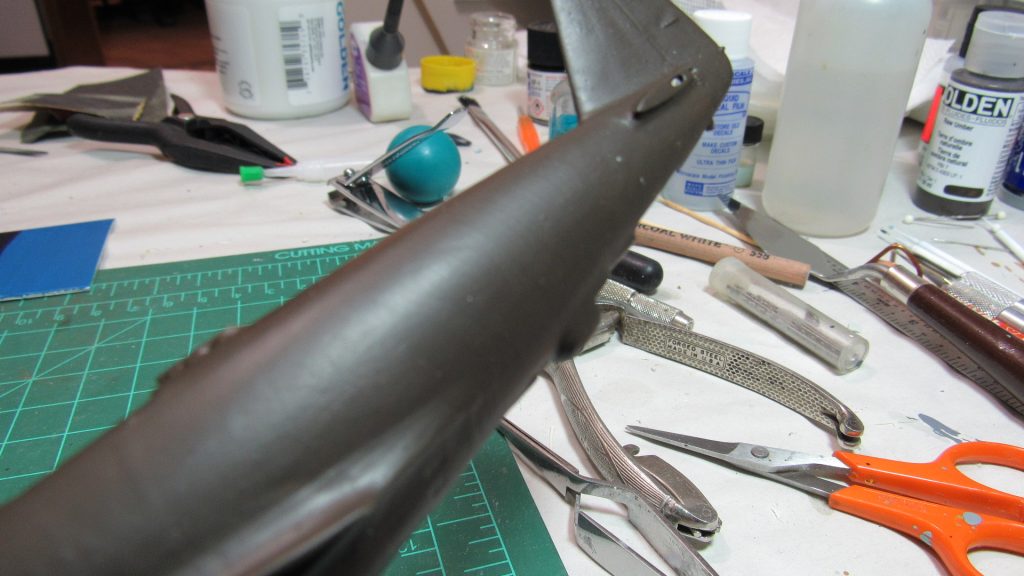
Ah yes.
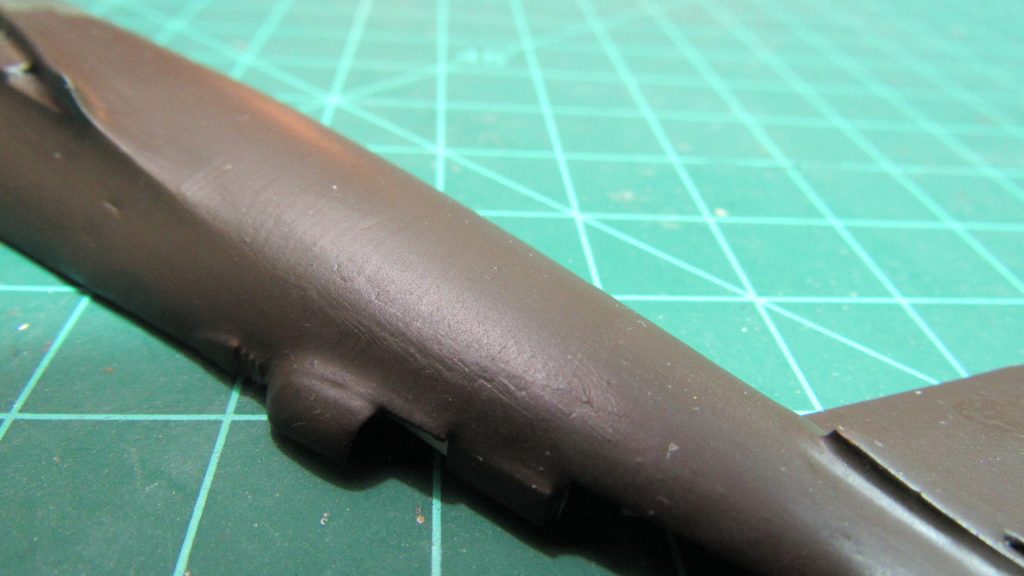
The Golden Hard Molding Paste CAN be sanded. It’s like Bondo with micro balloons added to make it easier to sand. It’s soft compared to regular Bondo but still pretty strong.
Strong enough for a plastic model kit.